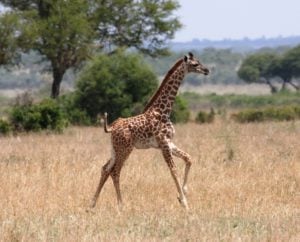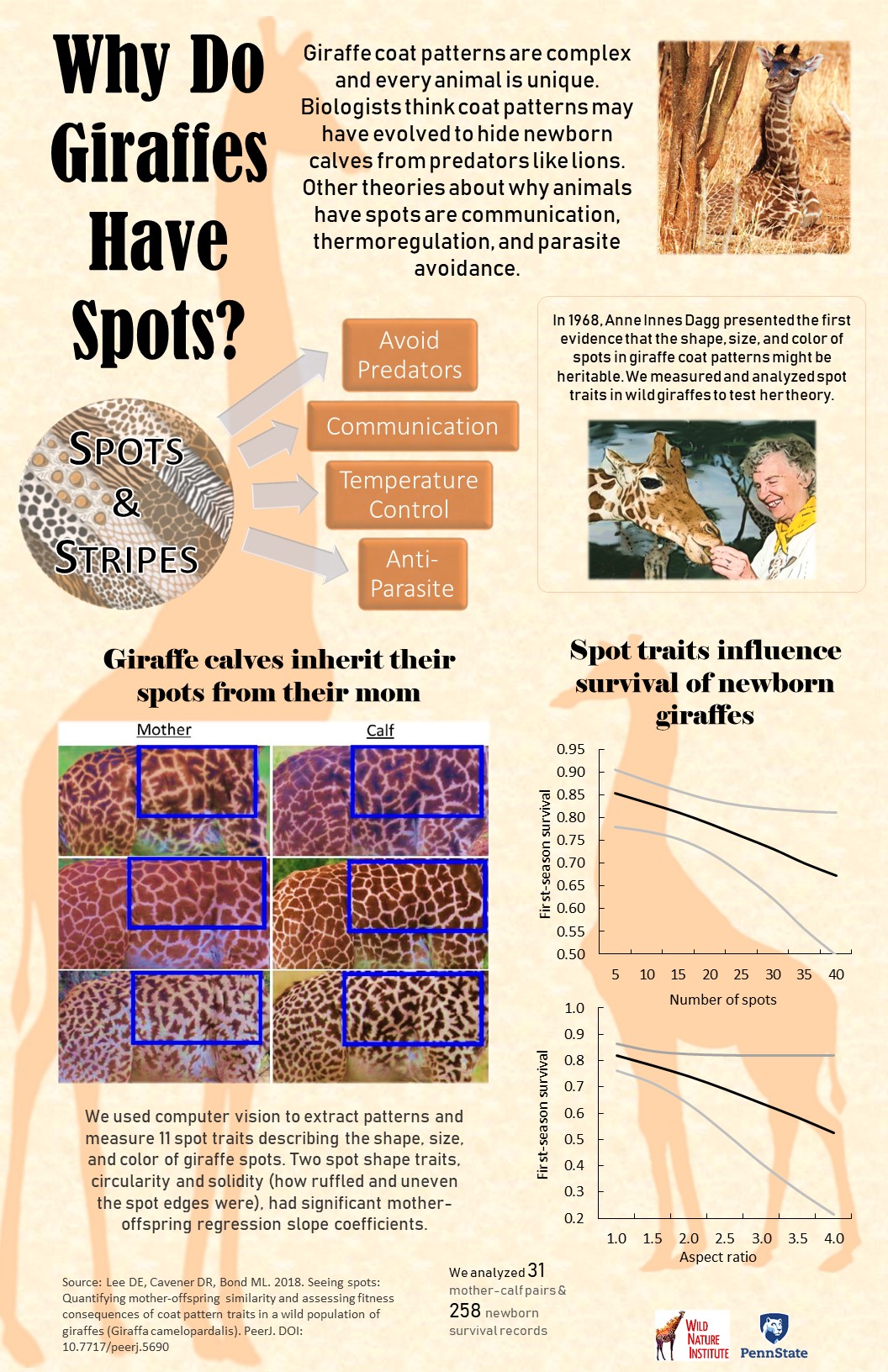50-year-old Hypothesis Confirmed with Modern Techniques
- The beautiful coat patterns of giraffes are individually unique and don’t change with age, but their origins and purpose were a mystery.
- A new study found wild giraffe spot pattern traits were heritable, passed down from mother to offspring, and certain spot traits improved survival of newborns.
- Quantifying heritability and fitness consequences of individual variation in coat patterns can help us understand how and why complex coat patterns evolved in animals.
Arusha, TANZANIA, 2 October 2018-
Giraffe spots are distinctive and beautiful, as shown by the popularity of giraffe patterns in fashion and design. But how giraffe patterns came to be and what purpose they serve in the wild was a mystery until this week. Dr. Derek Lee, associate research professor at Penn State University and principal scientist at the Wild Nature Institute published the results of a study today that revealed wild giraffe spot patterns are heritable, with elements of the pattern passed down from mother to offspring, and certain spot traits improved survival for newborns. Coats with complex patterns are found on many mammal species from anteaters to zebras, and these pelage traits are hypothesized to improve survival and reproduction by affecting predator and parasite evasion, temperature regulation, and social communication. This study was the first to examine complex mammal coat markings as individual traits that might have fitness consequences. Dr. Lee said, “Quantifying heritability and fitness consequences of mammal coat pattern traits will help us understand how and why complex coat patterns evolved in wild animals.”
Dr. Anne Innis Dagg, the first giraffe field researcher in Africa, presented evidence in 1968 that the shape, number, area, and color of spots in giraffe coat patterns may be heritable, but her analysis came from a small zoo population. Forty-nine years later, Lee’s study used a new dataset and modern analysis to confirm Dagg’s hypothesis. The heritability finding was neither surprising nor original, but science advances through replication of studies and the slow accumulation of evidence. The novel aspects of Lee’s study were the use of image analysis software to objectively measure various traits present in giraffe coat patterns, and statistics to quantify the heritability and fitness consequences of the patterns.
The spot pattern traits of circularity and jaggedness of edge were passed from mother to offspring, and variation in the coat patterns of 258 giraffe calves significantly affected their survival during the first few months of life, suggesting spot traits may be associated with anti-predator camouflage. Coauthor Monica Bond, doctoral candidate in ecology at the Univ
ersity of Zurich and principal scientist at the Wild Nature Institute, noted “Survival in the wild is precarious, and any small advantage such as what these spot traits provided, can mean the difference between an individual’s life and death.”
Spot traits might also serve other adaptive functions such as social communication, kin recognition, or thermoregulation, and might be associated with other fitness aspects like survival or fecundity of older giraffes. Giraffe skin color is grey, but the spots that make up their fur coat markings are highly variable in color and shape. Because each animal’s patterns are unique and do not change with age, natural coat patterns identify individuals, so wildlife conservation researchers like Dr. Lee use the patterns to study animals without the need for dangerous and traumatic captures.
“Now that we know that genetic variation underlies spot pattern variation in giraffes it should be possible with the aid of the giraffe genome sequence to discover the specific genes that determine spot patterns.“ noted Douglas Cavener, Professor of Biology and Verne M. Willaman Dean of the Penn State Eberly College of Science, and coauthor of the paper.
Lee said, “My hope is that other scientists will use the same tools to measure the traits of complex mammal coat patterns and this will advance our understanding of what these patterns mean.” Giraffes are vulnerable to extinction with a 40% decline over the past few decades. The Wild Nature Institute is running the world’s largest giraffe research project in northern Tanzania, and their results are informing species conservation and the field of evolutionary ecology.


